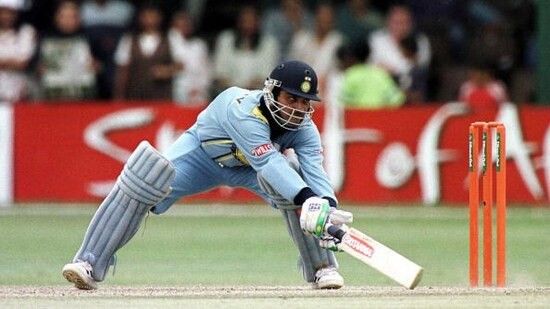
sanjeev
khelja|05-02-2025
After more than two decades of sporting isolation owing their apartheid policy, South Africa returned to international cricket towards the end of 1991, the Board of Control for Cricket in India taking the lead in facilitating the African nation's cricketing comeback.
During their first One-Day International series ever in November 1991, South Africa showcased great skills and wonderful nous, reiterating that the sport was vibrant and thriving in that country despite their sustained absence from competitive international cricket.
India managed to eke out a 2-1 victory then, but the South Africans did them no favours whatsoever four months later, in their maiden World Cup appearance in 1992. Led by Kepler Wessels, formerly of Australia, they pulled off a routine six-wicket victory in Adelaide in a rain-hit match and extended their unbeaten run against the Indians in global competitions with another straightforward four-wicket verdict in Hove in the 1999 World Cup.
As the teams squared up for their semifinal showdown in the ICC KnockOut Trophy in Nairobi on 13 October 2000, they would have recognised that they were in pretty much the same boat from the point of viewing of restoring credibility and winning back the trust of their fans. Hansie Cronje, South Africa's long-standing and talismanic leader, had been thrown out of the game in disgrace a few months earlier for his proactive role in the match-fixing saga, and the repercussions of the scandal were as widespread in South Africa as in India, which too was grappling with seismic aftershocks.
Victory in the quarterfinals against Australia, fashioned by young turks Yuvraj Singh and Zaheer Khan, had lifted India's pall of gloom somewhat; in the semifinals, the established order decided to put its hand up and sweep the defending champions out of the tournament. South Africa's disastrous tryst with World Cups of both the 50- and 20-over formats often clouds the reality that they won the inaugural ICC KnockOut Trophy in Bangladesh in 1998, defeating West Indies by four wickets in the final, Cronje himself masterminding a successful chase of 246 with an unbeaten 61.
Two years on, without Cronje but blessed with a glittering array of all-round riches, including Jacques Kallis and Lance Klusener, the Shaun Pollock-led outfit had crushed England in the quarters, but found India a different cup of tea once Sourav Ganguly opted to set a target. The left-hander played second fiddle to old opening mate Sachin Tendulkar during a stand of 66, but after that, he stamped his authority, reconfirming his standing as one of the greatest 50-overs openers of all time.
In their prime, Tendulkar and Ganguly were an unstoppable force, and Pollock and Roger Telemachus felt their fury first up. After Tendulkar was dismissed by Kallis, Ganguly cut loose with a flurry of boundaries, kept marginally in check only by the exceptional Allan Donald and Klusener. By this time, Rahul Dravid had gradually started to crack to the ODI code, and he played a crucial hand of 58 in a second-wicket alliance of 145 with his captain. A third successive fruitful partnership ensued between southpaws Ganguly and Yuvraj Singh, fresh off that breathtaking 84 against Australia in the quarters. They smashed 82 in just 59 deliveries to provide a grandstand finish and when the clock wound down, Ganguly had made an unbeaten 141 (142b, 11x4, 6x6) in his team's 295 for six.
It was a total that would take some getting against a rejuvenated and incisive Indian attack with a nice blend of youthful exuberance and wise heads. Zaheer Khan, another of the heroes in the quarterfinal decimation of Australia, struck telling blows in his first spell by dismissing opener Andrew Hall and Boeta Dippenaar in the third and fifth overs respectively of South Africa's reply. The run out of Gary Kirsten, sandwiched between the two Zaheer strikes, rocked South Africa and they never really found any partnerships, or momentum, with the required run rate mounting steadily.
Zaheer's early fire was complemented by the class and experience of Anil Kumble, who strangled the middle order and had the dangerous Klusener caught behind, and the genius of Tendulkar, by now taking wickets for fun with his bewildering mix largely driven by mesmerising classical leg-spin. Jonty Rhodes defied briefly with 32 and Mark Boucher, the wicketkeeper batting at No. 6, top-scored with 60 before perishing to Ganguly, but no one else touched 30. Consequently, South Africa crashed and burned to 200 with nine overs left unutilised, ushering India's entry into the final of a global tournament for the first time since 1985, when they had emerged triumphant in the World Championship of Cricket in Australia.
Brief scores: India: 295/6 in 50 overs (Sourav Ganguly 141 n.o., Sachin Tendulkar 39, Rahul Dravid 58, Yuvraj Singh 41; Allan Donald 2-34, Jacques Kallis 2-71) beat South Africa: 200 all out in 41 overs (Jonty Rhodes 32, Mark Boucher 60, Lance Klusener 29; Zaheer Khan 2-27, Anil Kumble 2-28, Sachin Tendulkar 2-32) by 95 runs. PoM: Sourav Ganguly.

Authorities to beef up security at Cuttack’s Barabati Stadium ahead of India-England ODI

Rohit Sharma and Virat Kohli’s strong record will count: Suresh Raina

Rahul Dravid's car collides with auto in Bengaluru

A stampede over the ticket of ODI in Cuttack between India and England, many fans injured






